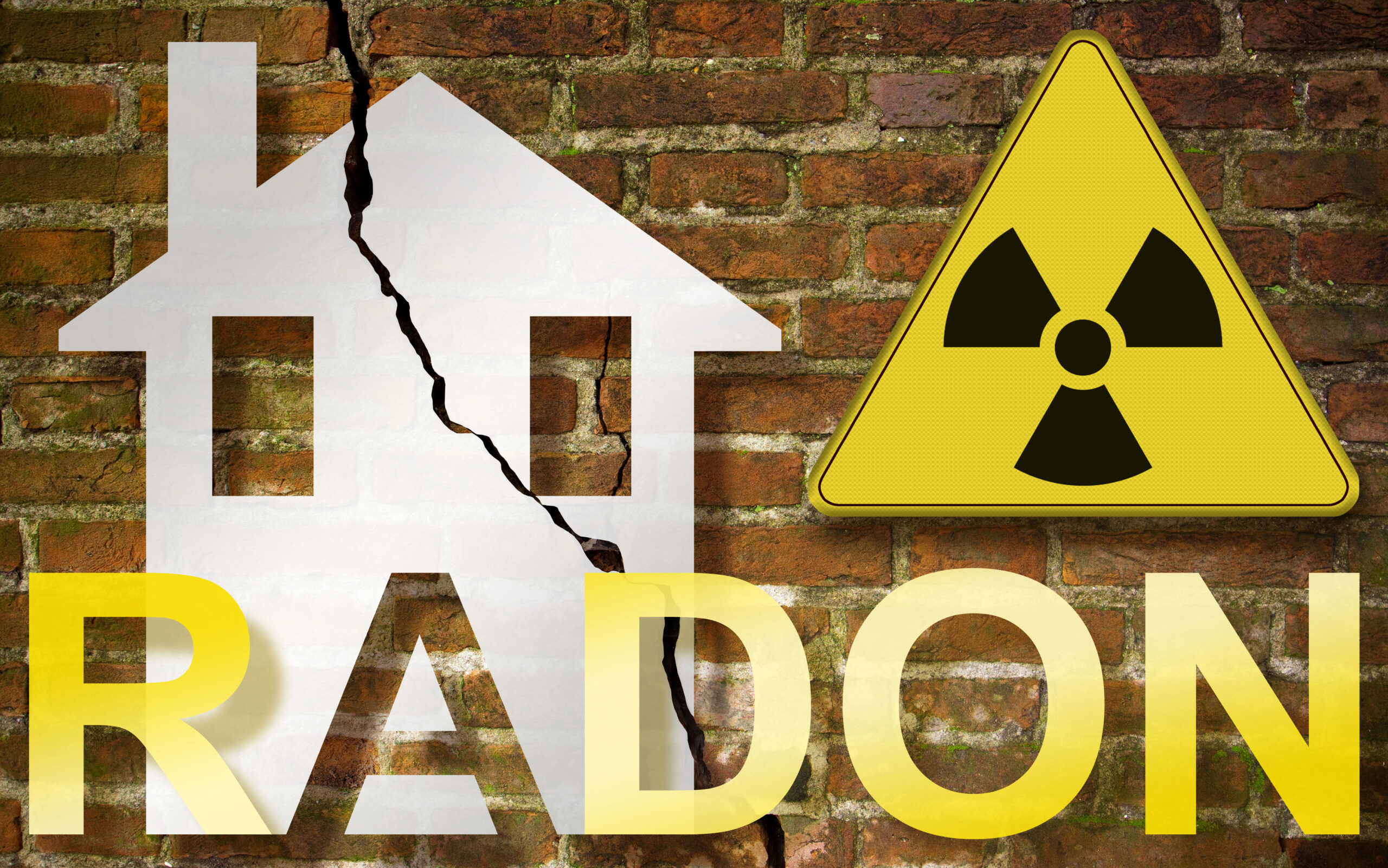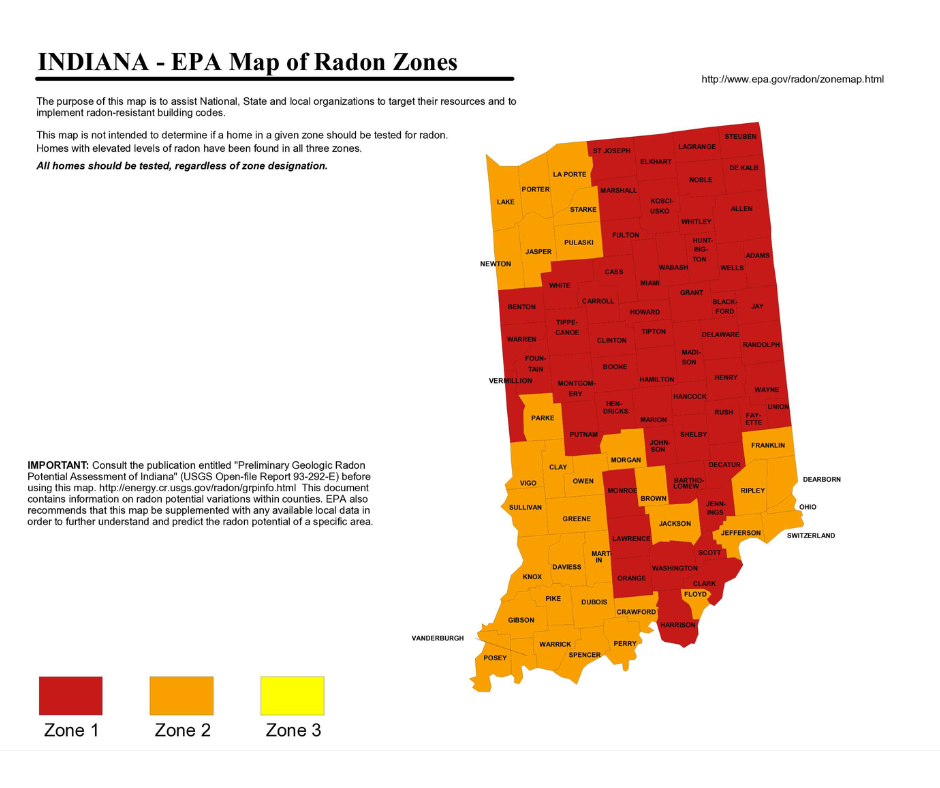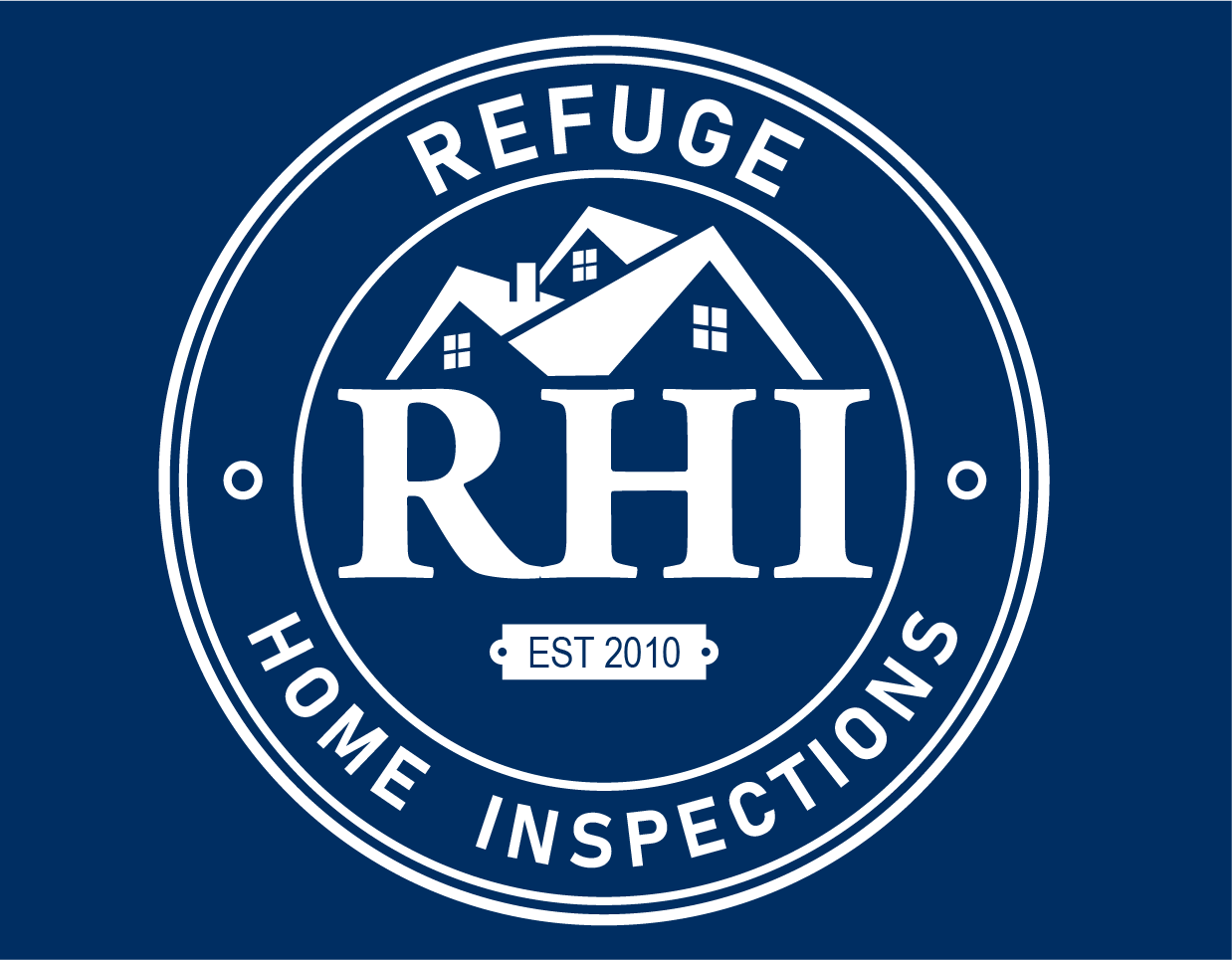Radon, a naturally occurring radioactive gas, is present in varying levels throughout the United States. While it can be found across the nation, it’s important for residents of Southwestern Indiana to be aware of the potential radon levels in their counties.

RHI Home Inspections explores the radon levels in Southwestern Indiana counties and provides a helpful map illustrating these levels.
Understanding Radon
Radon is a colorless and odorless gas that is produced by the breakdown of uranium in soil, rock, and water. It enters homes through cracks in the foundation, gaps in floors, and other openings.
Long-term exposure to high levels of radon is a known health risk, linked to lung cancer in non-smokers and is the second leading cause of lung cancer overall.
Radon in Southwestern Indiana Counties
Southwestern Indiana is home to several counties where radon levels may pose a potential risk to residents. These counties include Vanderburgh, Warrick, Posey, Gibson, and Spencer. It is vital for homeowners and residents to take precautionary measures to ensure their safety.
Understanding Radon Levels
The Environmental Protection Agency (EPA) has established a recommended action level for radon at 4 picocuries per liter (pCi/L). This level signifies that mitigation efforts should be taken to reduce radon exposure. It’s worthwhile to note that even levels below 4 pCi/L can pose some risk, albeit at a lower magnitude.
Radon Levels Map
For a visual representation, refer to the map provided below which illustrates the radon levels in Southwestern Indiana counties. The color legend indicates the various concentrations of radon gas, ranging from low to high:

Protecting Your Home and Loved Ones
Given the potential risks associated with radon exposure, it’s crucial to test your home for radon and take appropriate measures to mitigate its levels. Here are a few steps you can take:
- Radon Testing: Conduct a radon test in your home using an EPA-approved radon detector kit. It can be purchased from local stores or requested from certified radon testing professionals like RHI Home Inspections.
- Professional Mitigation: If your home’s radon levels exceed the recommended action level of 4 pCi/L, consider contacting a qualified radon mitigation professional. They can implement appropriate strategies like soil depressurization systems to reduce radon levels.
- New Construction Considerations: If you are building a new home, ensure the design incorporates radon-resistant construction techniques, such as soil depressurization systems and proper sealing.
Radon gas is a potential health concern in Southwestern Indiana counties, and awareness is the first step in mitigating the risk. By understanding radon levels and taking preventative measures, you can protect yourself and your loved ones from the dangers associated with long-term radon exposure.
